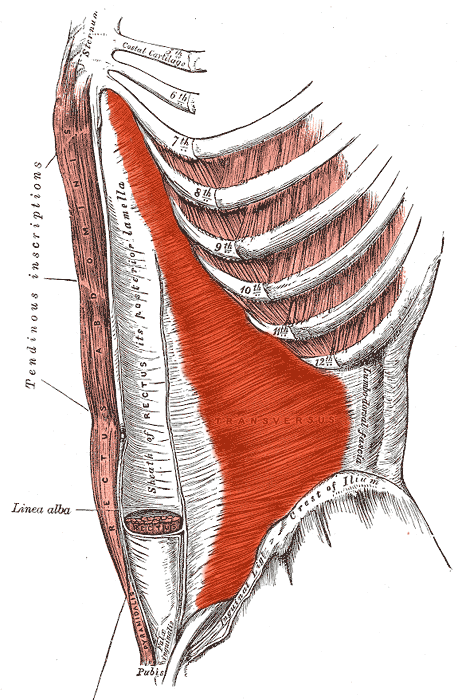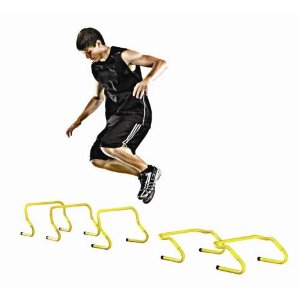“The core”
Nowadays, “strengthening the core” has become a very popular concept among various populations ranging from elite athletes to chronic pain patients. the concept at heart is a good one-the idea that having a stable base to operate from makes one a more efficient mover. However, there are quite a few popular misconceptions present, particularly in athletes, regarding what having a stable core really means.
Phasic vs. Tonic
One of the most important concepts to note regarding stable core/posture is the difference between a phasic muscle and a tonic muscle. You may think of this difference as similar to the difference between a fast and a slow twitch muscle. A phasic muscle is a muscle that is intended to create a movement, usually a gross movement of an extremity. Any muscle can have slow or fast twitch fibers, tendencies, regions, etc., but phasic muscles overall are intended to create a movement over a short period of time, for an intended task. These muscles are not meant to create stability, they are meant to use strength to achieve a task. Tonic muscles, on the other hand, are muscles whose primary function is to stabilize or prevent excessive or unwanted movement between joints in the body. These muscles are meant to be able to maintain contractions over a prolonged period of time, at a low tone, regardless of the movement of the rest of the joints/extremities around them. These tonic muscles are the often neglected and undervalued ones across all populations, and especially in athletes.
Anatomy of the spine
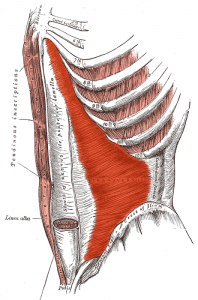
Chances are that most reader will have seen a diagram of the spine at some point in their lives. Even if they have not, they may have some concept of the fact that the spine is made up of individual segments, vertebrae, with discs in between them, organized into various regions (cervical, thoracic, lumbar, sacral, coccyx). The lumbar spine is what can generally be considered the “low back”.
The muscles in and surrounding the spine are much more complicated than one might think. The first “core” muscle that one generally considers is the “six pack” muscle, the rectus abdominis. I will lump the obliques into this category as well, as they function similarly to the rectus except for rotation vs. forward bending of the spine. The rectus abdominis muscle is generally responsible for flexion (forward bending) of the spine in all regions, and also contributes to bending forwards or up at the hip. While this muscle is certainly an important one, it is a phasic muscle (see above), responsible for large power movements. Not only that, but the movement it created during a contraction is a movement that is not particularly desirable in most scenarios. Consider how many times you have had to crunch forcefully to hit an opponent while fencing. Even if you must lean forwards, your power comes from your hips, certainly not from your abdomen pulling you down towards the ground. Thus, while it should not be ignored, this muscle is nowhere near as important as most would consider for overall stability of the spine.
Next, I will consider the primary back extensors, the erector spinae. The superficial back extensors are what are commonly known as the paraspinals, and are those big columns you might see on either side of your spine. They are actually comprised of three separate columns of muscle (iliocostalis, longissimus, and semispinalis for those who are interested). These muscles are primarily used for back extension (back bending) and sidebending. Now if my point is that forward bending at the spine is counterproductive, then strengthening the posterior musculature to “balance out” may not seem like such a bad idea. Indeed, many coaches include back extensions (particularly at the lumbar spine) into their strength and conditioning. While this idea has some merit, the erector spinae are also not the ideal candidates for stability of the spine. They are again, phasic muscles, long and intended for large scale movements and not prolonged stability. Consider how many times you have forcefully had to extend your spine to hit an opponent-my guess is not very many. Even during the recovery from a lunge, your movement should come hinging at the hip, not from an overextension or flexion of the spine at multiple different segments. I have known many fencers with back strains that are almost exclusively due to this problem (lack of stability and overuse of phasic muscles). Consider then, that strengthening the phasic muscles in the front and back of the spine actually puts you at a higher risk for injury and may even cause your spine to be more unstable.
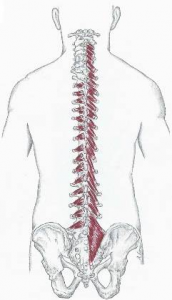
Forget crunches and back extensions as the main part of your core routine-they’re not helping as much as you think.
Having a strong “back” is of course a good idea, just like having a strong rotator cuff is important, and being strong in general is a good idea. What we are considering here is efficiency-using the correct muscles with the appropriate amount of force for the correct movements and purposes.
What to do, what to do?
Meet the deep core. The important muscles/groupings to consider are the transversus abdominis, the multifidi and rotatores, and the pelvic floor. These muscles have very specific anatomical attachments and functions that may not be important to delve into in this article. Generally speaking though, the multifidi and rotatores are attached between segments of the spine on some of the outer bony prominences of each vertebrae.
The transversus abdominis is a large horizontal sash that lies under the abdominals we generally think of, covering the deepest part of the abdominal cavity. It is attached to the ribs at their bottom edges and at the front of the ribs and the hips. The pelvic floor is comprised of many different muscles, and lies at the bottom of the pelvis. The pelvic floor merits its own article as it is implicated in many dysfunctions ranging from hip pain to postpartum patients and has a complicated function.
All of these are tonic/postural muscles or groups of muscles, intended to maintain the spine stable during movement. Together they perform the function that power lifters are often trying to mimic by using weightlifting belts, compressing and maintain pressure inside the abdomen and keeping individual vertebrae from rotating or shearing out of alignment. Note this important difference-while the rest of the muscles we considered are meant to move the spine in different directions, the tonic muscles I just introduced help maintain a certain position or control movement of the spine while other parts of the body move. By keeping the pelvis stable and the spine from rotating, the “core” of the body remains neutral and strong while the extremities move.
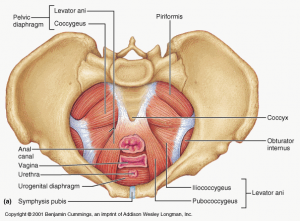
To feel this difference, you can perform a simple experiment. Lie on your back on the floor, well supported, and put either hand on the front of your hip bone (the pointy part in from of your hip). Bend your knees up and relax into that position. Now try lifting one knee into the air. Did the hip on the same side of the lifted leg move? If not, try lifting your leg into the air fully extended and monitor again. Chances are, your hip moved and your back likely arched. Now try the same thing but breathe out sharply, pull your belly button in towards your abdomen, and squeeze like you have to go to the bathroom but have to hold it. Now breathe. You may find that it is difficult to hold these contractions and breathe at the same time. Once you feel like you can hold this without holding your breath, try lifting your knee or leg while holding the previous set of instructions. Lift, but don’t let your back arch or your hip move. For most people, this is much harder.
Who cares?
The focus in core training should shift from moving the spine to maintaining a neutral/stable spine while moving the rest of the body. This will require significantly less effort from your body, and make the rest of the body’s movements significantly more powerful and efficient. Your body is designed to engage the core automatically and can be retrained to do so. If the core is stable, your hips and your shoulders should be able to move freely and powerfully off of a strong, unmoving base with little effort expended for anything other than the primary intended movement. Efficiency is the key to any successful athlete, especially in a sport with as complex of a set of movements as fencing.
Teaching core activation and progressions varies widely between athletes, as it requires a high level of motor control and retraining. Basic exercises can be found easily in many locations throughout the web, but a basic level should begin with the aforementioned exercises-bridging, marching, leg raises, etc. without letting the pelvis move. For proper training, I would advise consulting your nearest physical therapist for a personalized program or, alternatively, starting a program like pilates. The most difficult part of a progression for this kind of training is translating strength into actual moving and fencing, and that requires some expertise.


